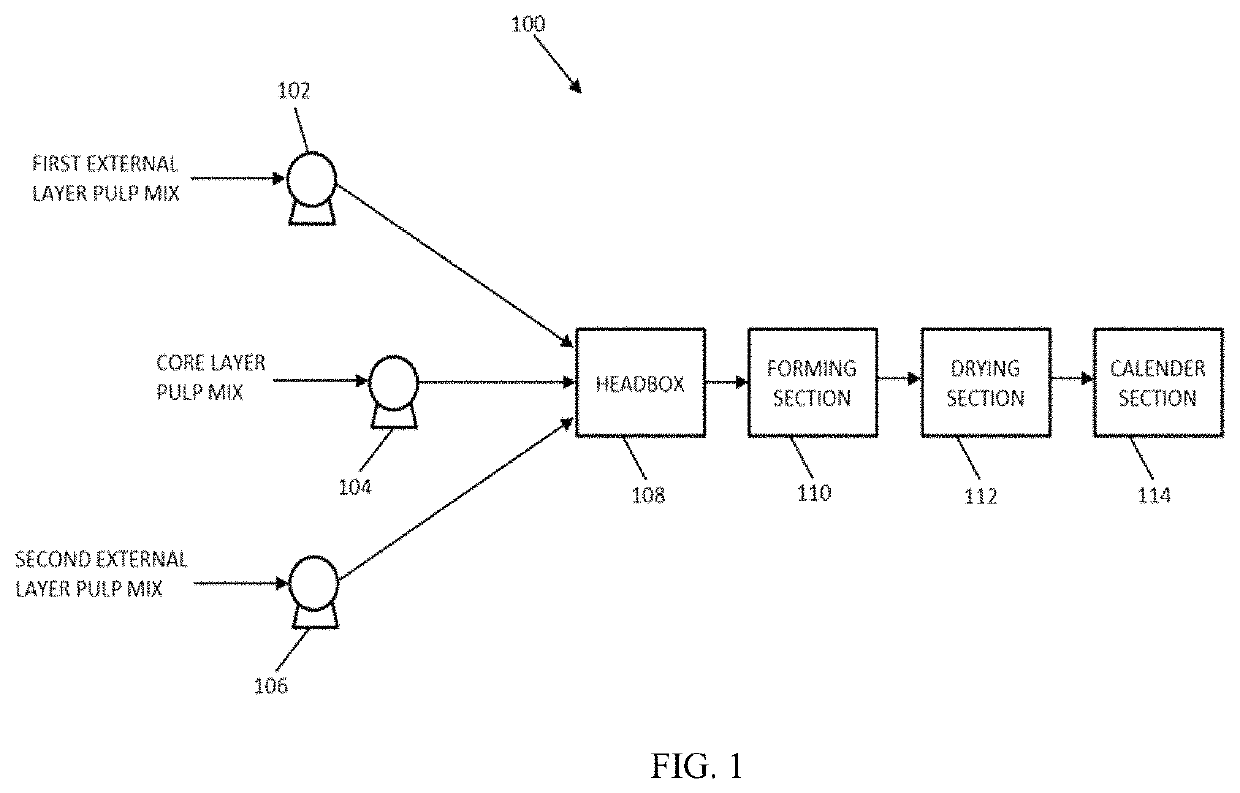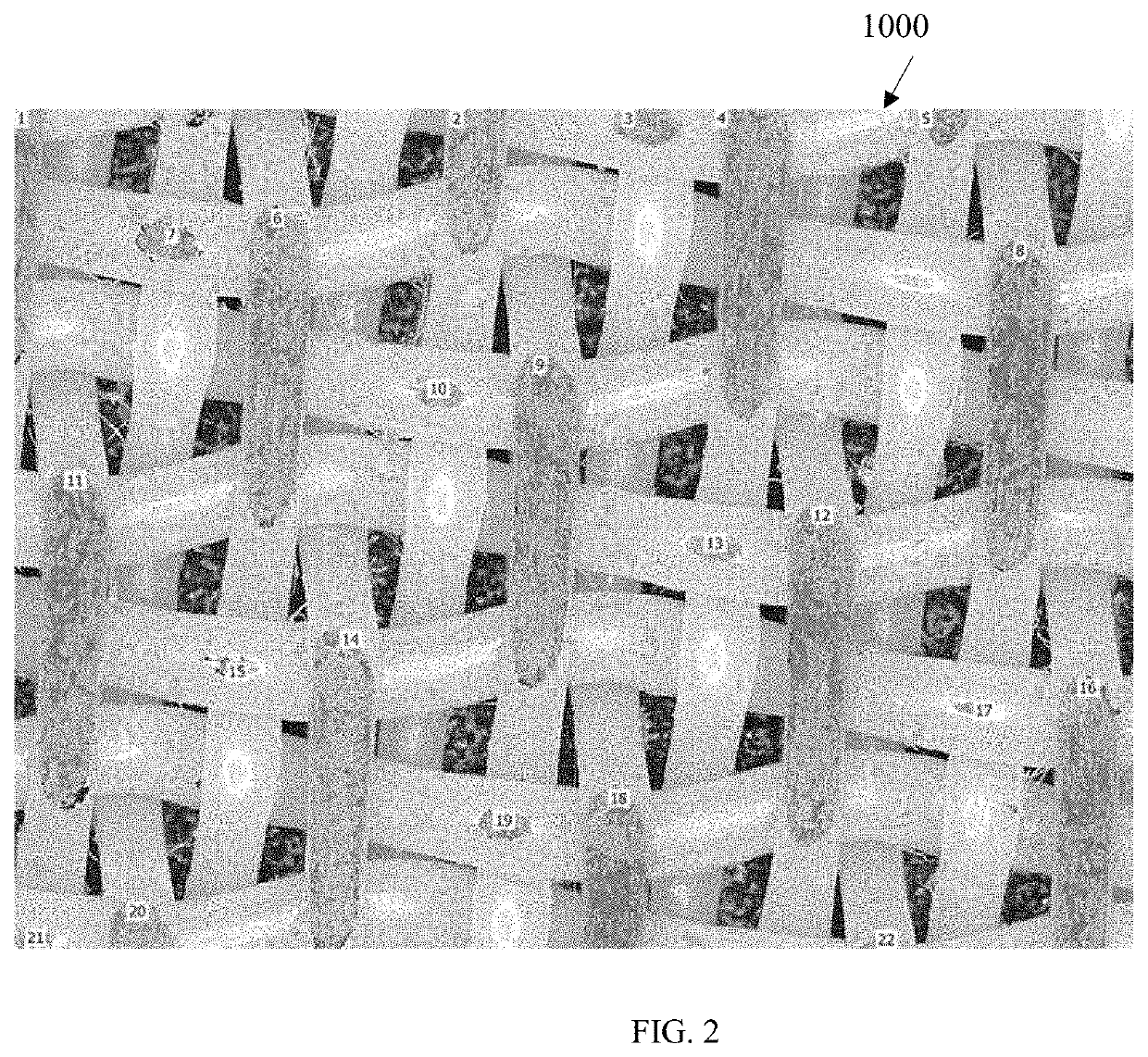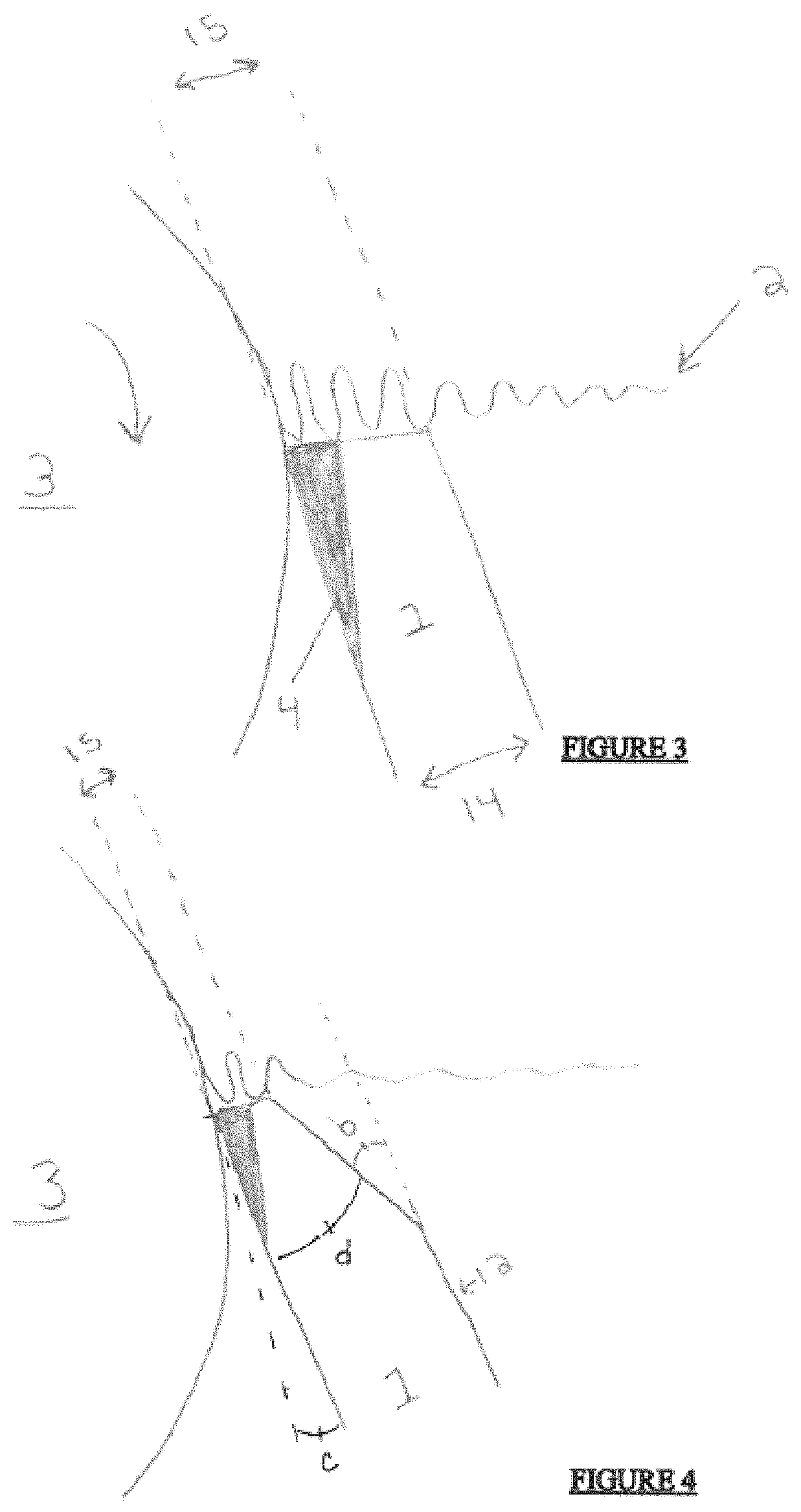Absorbent structures with high absorbency and low basis weight
a technology of absorbent structures and absorbent materials, applied in the field of absorbent structures, can solve the problems of low energy consumption per ton, and low absorbency of webs, and achieve the effect of low base weigh
- Summary
- Abstract
- Description
- Claims
- Application Information
AI Technical Summary
Benefits of technology
Problems solved by technology
Method used
Image
Examples
example 1
[0134]Paper towel made on a wet-laid asset with a three layer headbox was produced using the through air drying method. A TAD fabric weave pattern was used with the warp yarn passing over three consecutive weft yarns, then under three subsequent weft yarns, over the subsequent weft yarn, under the subsequent weft yarn, and then repeating the entire sequence over again throughout the fabric was utilized. The fabric had a 16 filaments / cm Mesh and 11 filaments / cm Count, a 0.40 mm diameter round warp monofilament, a 0.55 mm diameter round weft monofilament, a 1.17 mm caliper, with a 620 cfm and a knuckle surface that was sanded to impart 15% contact area with the Yankee dryer. The flow to each layer of the headbox was about 33% of the total sheet. The three layers of the finished tissue from top to bottom were labeled as air, core and dry. The air layer is the outer layer that is placed on the TAD fabric, the dry layer is the outer layer that is closest to the surface of the Yankee drye...
PUM
| Property | Measurement | Unit |
|---|---|---|
| weight | aaaaa | aaaaa |
| depth of embossment | aaaaa | aaaaa |
| depth of embossment | aaaaa | aaaaa |
Abstract
Description
Claims
Application Information
 Login to View More
Login to View More - R&D
- Intellectual Property
- Life Sciences
- Materials
- Tech Scout
- Unparalleled Data Quality
- Higher Quality Content
- 60% Fewer Hallucinations
Browse by: Latest US Patents, China's latest patents, Technical Efficacy Thesaurus, Application Domain, Technology Topic, Popular Technical Reports.
© 2025 PatSnap. All rights reserved.Legal|Privacy policy|Modern Slavery Act Transparency Statement|Sitemap|About US| Contact US: help@patsnap.com



